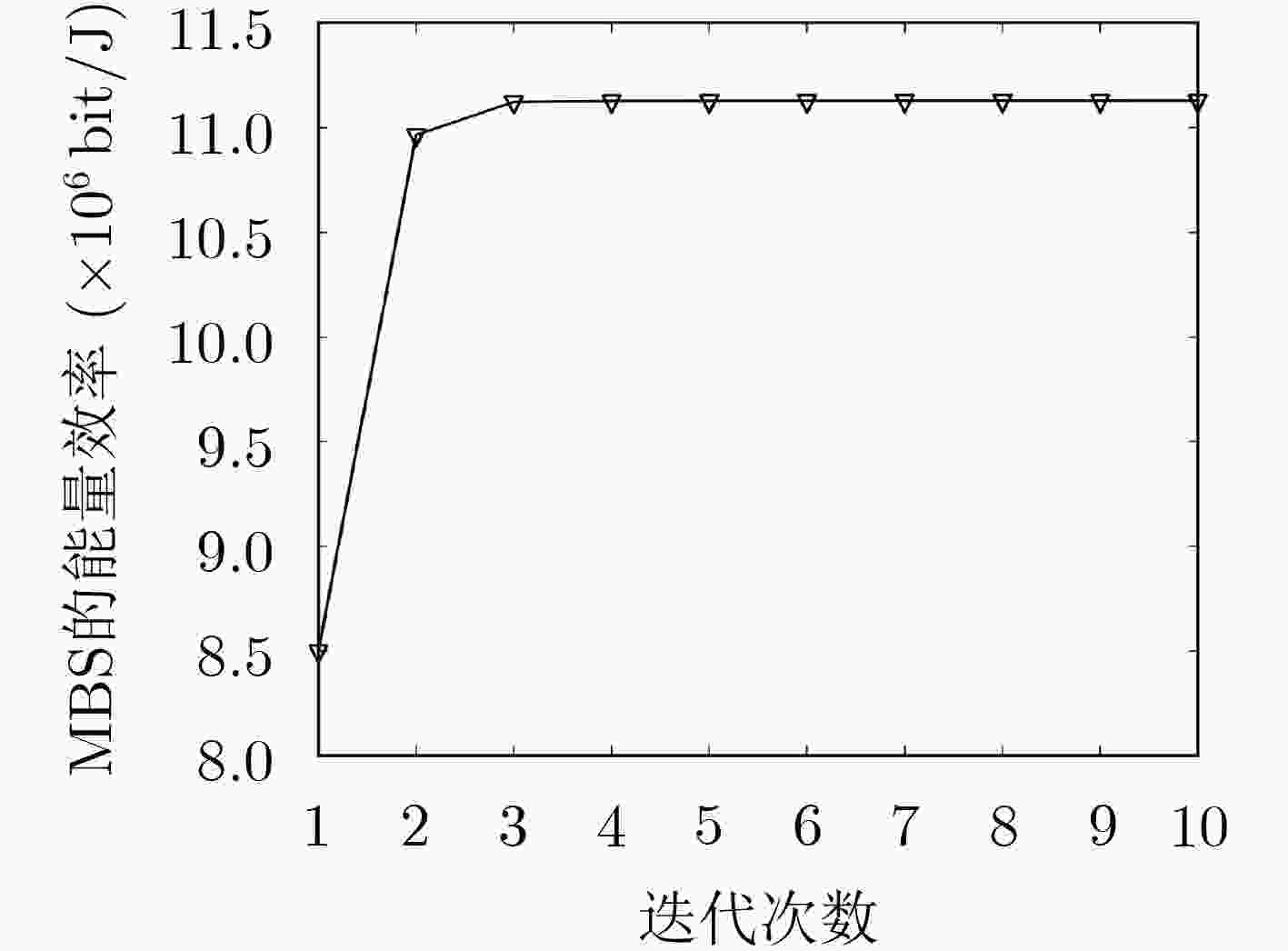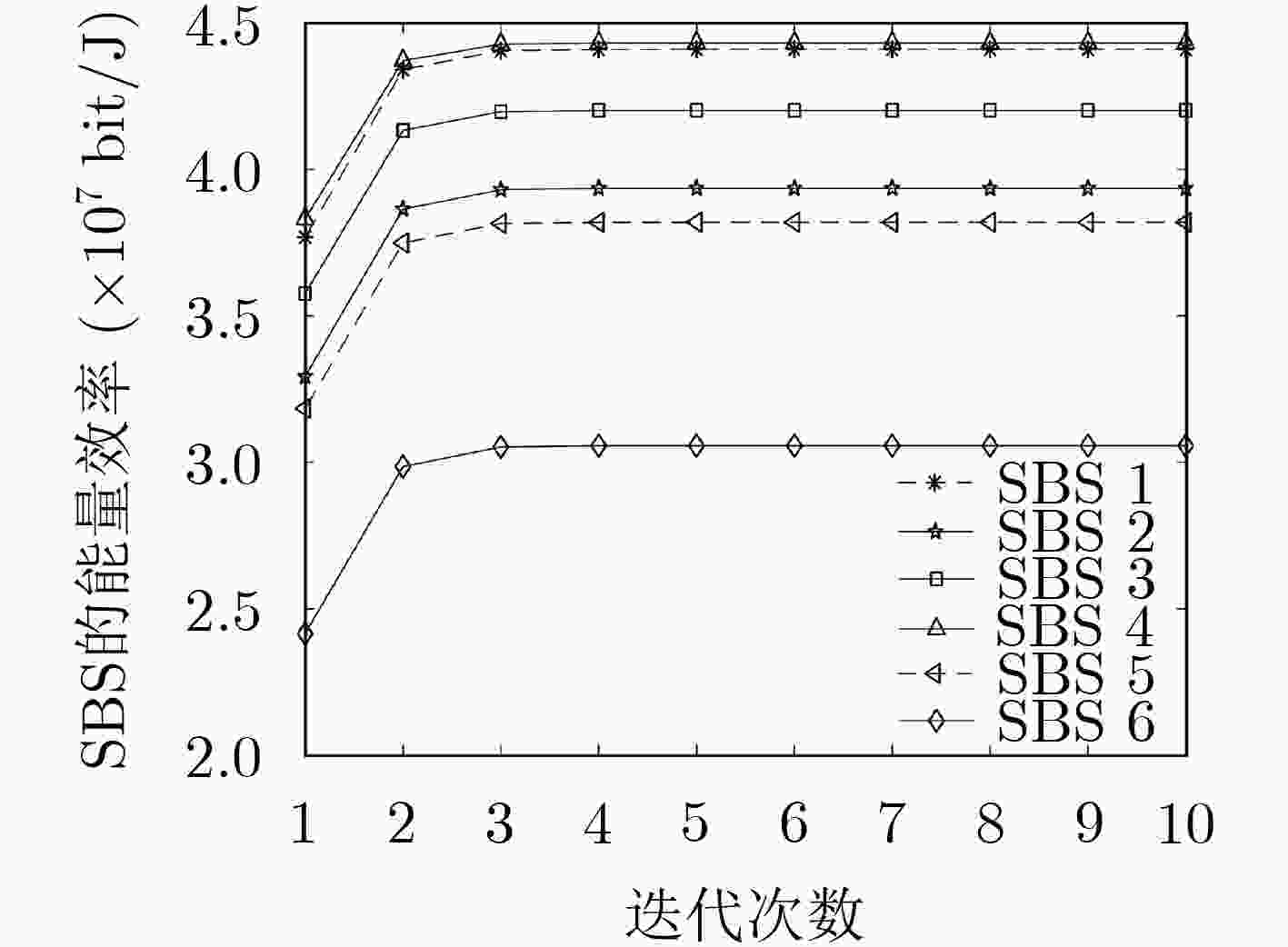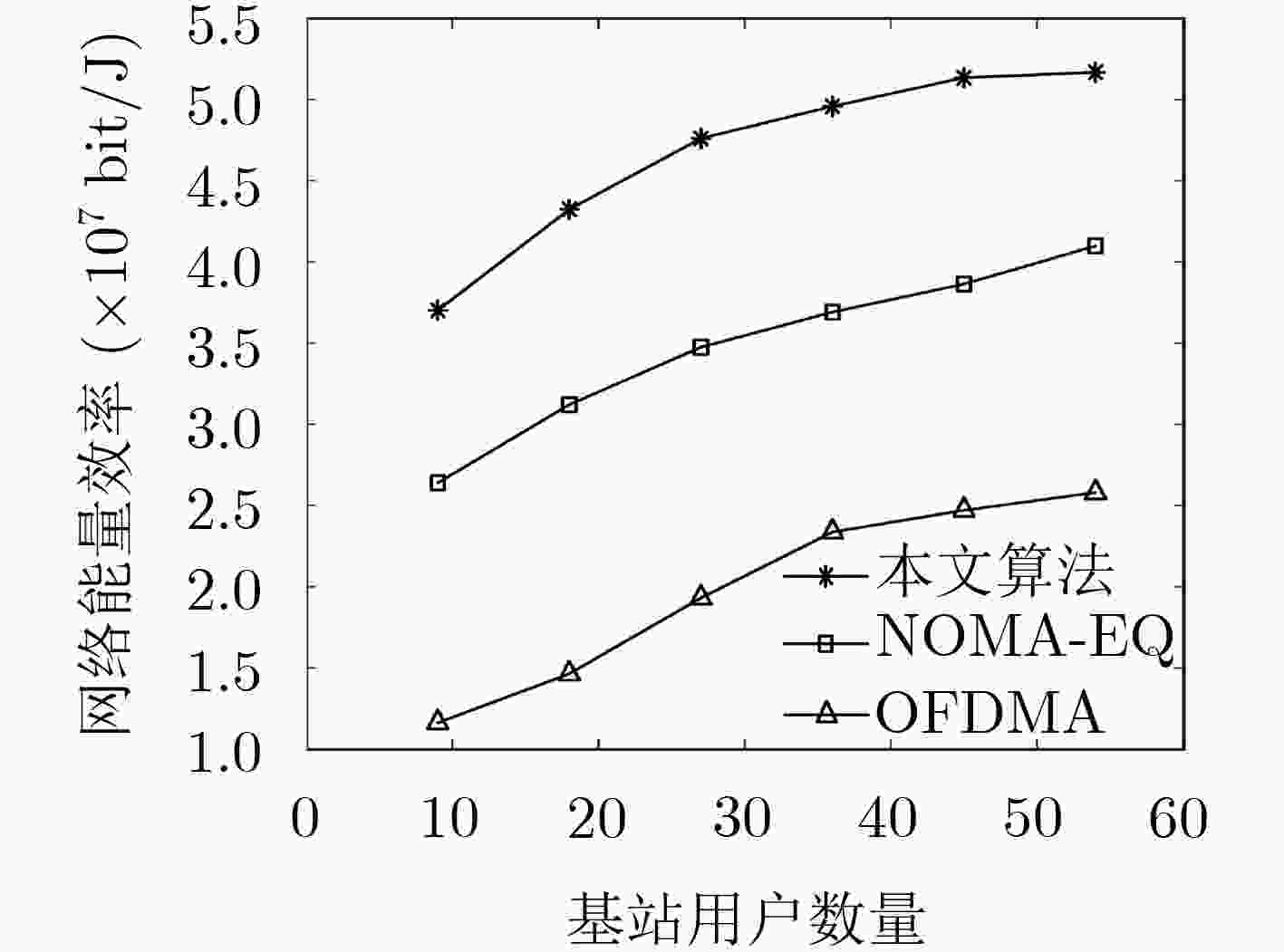Energy Efficient Based Resource Optimization Algorithm for Two-tier Non-Orthogonal Multiple Access Network
-
摘要:
该文针对双层非正交多址系统(NOMA)中基于能量效率的资源优化问题,该文提出基于双边匹配的子信道匹配方法和基于斯坦科尔伯格(Stackelberg)博弈的功率分配算法。首先将资源优化问题分解成子信道匹配与功率分配两个子问题,在功率分配问题中,将宏基站与小型基站层视作斯坦科尔伯格博弈中的领导者与追随者。然后将非凸优化问题转换成易于求解的方式,分别得到宏基站和小型基站层的功率分配。最后通过斯坦科尔伯格博弈,得到系统的全局功率分配方案。仿真结果表明,该资源优化算法能有效地提升双层NOMA系统的能量效率。
Abstract:A subchannel matching method based on bilateral matching and a power allocation algorithm based on Stackelberg game are proposed for two-tier Non-Orthogonal Multiple Access (NOMA) network. Firstly, the resource optimization problem is decomposed into two subproblems—sub-channel matching and power allocation. In the power allocation, the macro base station layer and small base station layer are regarded as the leader and followers in the Stackelberg game. Then, the non-convex optimization problem is converted into a way to be easily solved, and the power allocation of the both layers are obtained respectively. Finally, the global power allocation scheme of the system is obtained by using Stackelberg game. The simulation results show that the proposed resource optimization algorithms can effectively improve the energy efficiency of the two-tier NOMA system.
-
Key words:
- Non-Orthogonal Multiple Access (NOMA) /
- Game /
- Energy efficiency /
- Resource allocation
-
表 1 不同路径衰减公式
路径 公式 宏基站到宏用户 ${\rm{Pl}}\left( r \right) = 15.3 + 37.6\lg r$ 宏基站到小型基站用户 ${\rm{Pl}}\left( r \right) = 15.3 + 37.6\lg r + {L_w}$ 小型基站到其用户 ${\rm{Pl}}\left( r \right) = 38.46 + 20\lg r + 0.7r$ 小型基站到其他
小型基站用户$\begin{aligned} {\rm{Pl} }\left( r \right) =\,& \max \left( \begin{array}{l} \left( {15.3 + 37.6\lg \left( {r - {R_s} } \right)} \right) \\ \left( {38.46 + 20\lg \left( {r - {R_s} } \right)} \right) \\ \end{array} \right) \\ &+ 0.7{R_s} + 2{L_w} \end{aligned} $ 小型基站到宏用户 $\begin{aligned} {\rm{Pl} }\left( r \right) =\,& \max \left( \begin{array}{l} \left( {15.3 + 37.6\lg \left( {r - {R_s} } \right)} \right) \\ \left( {38.46 + 20\lg \left( {r - {R_s} } \right)} \right) \\ \end{array} \right) \\ &+ 0.7{R_s} + {L_w} \end{aligned} $ 表 2 仿真参数
参数 值 宏基站半径${R_m}$ 500 m 小型基站半径${R_s}$ 10 m 墙渗透衰减${L_w}$ 10 dB 系统带宽$B$ 30 MH 载波频率 2 GHz 对数正态阴影衰落方差 8 dB -
ZHANG Haijun, FANG Fang, CHENG Julian, et al. Energy-efficient resource allocation in NOMA heterogeneous networks[J]. IEEE Wireless Communications, 2018, 25(2): 48–53. doi: 10.1109/MWC.2018.1700074 XIAO Zhenyu, ZHU Lipeng, CHOI J, et al. Joint power allocation and beamforming for Non-Orthogonal Multiple Access (NOMA) in 5G millimeter wave communications[J]. IEEE Transactions on Wireless Communications, 2018, 17(5): 2961–2974. doi: 10.1109/TWC.2018.2804953 WU Zhanji, LU Kun, JIANG Chengxin, et al. Comprehensive study and comparison on 5G NOMA schemes[J]. IEEE Access, 2018, 6: 18511–18519. doi: 10.1109/ACCESS.2018.2817221 ZENG Ming, HAO Wanming, DOBRE O A, et al. Energy-efficient power allocation in uplink mmWave massive MIMO with NOMA[J]. IEEE Transactions on Vehicular Technology, 2019, 68(3): 3000–3004. doi: 10.1109/TVT.2019.2891062 ZHU Kun, HOSSAIN E, and ANPALAGAN A. Downlink power control in two-tier cellular OFDMA networks under uncertainties: A robust Stackelberg game[J]. IEEE Transactions on Communications, 2015, 63(2): 520–535. doi: 10.1109/tcomm.2014.2382095 CHEN Zhiyong, DING Zhiguo, DAI Xuchu, et al. An optimization perspective of the superiority of NOMA compared to conventional OMA[J]. IEEE Transactions on Signal Processing, 2017, 65(19): 5191–5202. doi: 10.1109/TSP.2017.2725223 吴广富, 邓天垠, 苏开荣, 等. 基于非正交多址接入系统的多用户分组优化算法[J]. 电子与信息学报, 2018, 40(9): 2080–2087. doi: 10.11999/JEIT171220WU Guangfu, DENG Tianyin, SU Kairong, et al. Multi-user grouping optimization algorithm based on non-orthogonal multiple access systems[J]. Journal of Electronics &Information Technology, 2018, 40(9): 2080–2087. doi: 10.11999/JEIT171220 ISLAM S M R, AVAZOV N, DOBRE O A, et al. Power-domain Non-Orthogonal Multiple Access (NOMA) in 5G systems: Potentials and challenges[J]. IEEE Communications Surveys & Tutorials, 2017, 19(2): 721–742. doi: 10.1109/comst.2016.2621116 XIANG Lanhua and CHEN Hongbin. Energy-efficient and fair power allocation approach for NOMA in ultra-dense heterogeneous networks[C]. International Conference on Cyber-enabled Distributed Computing and Knowledge Discovery, Nanjing, China, 2017: 89–94. doi: 10.1109/CyberC.2017.54. LI Xunan, LI Chong, and JIN Ye. Dynamic resource allocation for transmit power minimization in OFDM-based NOMA systems[J]. IEEE Communications Letters, 2016, 20(12): 2558–2561. doi: 10.1109/LCOMM.2016.2612688 HOJEIJ M R, FARAH J, NOUR C A, et al. Resource allocation in downlink Non-Orthogonal Multiple Access (NOMA) for future radio access[C]. The 81st IEEE Vehicular Technology Conference, Glasgow, UK, 2015: 1–6. doi: 10.1109/VTCSpring.2015.7146056. FANG Fang, ZHANG Haijun, CHENG Julian, et al. Joint user scheduling and power allocation optimization for energy-efficient NOMA systems with imperfect CSI[J]. IEEE Journal on Selected Areas in Communications, 2017, 35(12): 2874–2885. doi: 10.1109/JSAC.2017.2777672 SAITO Y, KISHIYAMA Y, BENJEBBOUR A, et al. Non-Orthogonal Multiple Access (NOMA) for cellular future radio access[C]. The 7th IEEE Vehicular Technology Conference, Dresden, Germany, 2013: 1–5. doi: 10.1109/VTCSpring.2013.6692652. PAPANDRIOPOULOS J and EVANS J S. SCALE: A low-complexity distributed protocol for spectrum balancing in multiuser DSL networks[J]. IEEE Transactions on Information Theory, 2009, 55(8): 3711–3724. doi: 10.1109/tit.2009.2023751 -






 下载:
下载:





 下载:
下载:
